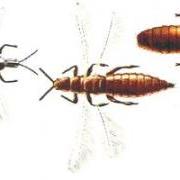The OrigF/clred
Member
okay, posting this for a friend's grow, he's computer illiterate and actually hostile to computers and the recent NSA scandals didn't do a lot to help. I'm helping him with his grow or rather, learning what it takes to bring plants to full flower or bud
first, kudos on one heckuva forum - especially this infirmary - i've picked up a lot of good info for my bud
now to the problem - he's been finding white specks on his leaves, but no damage to any leaves. The specks look like a small pc of cigarette ash, and as he's a smoker, that's what we thought they were, but they started increasing in numbers. Some of the specks are brown, and look like brown powder - both the white specs and the brown / amber spots rub or clean off the leaves.
first, kudos on one heckuva forum - especially this infirmary - i've picked up a lot of good info for my bud
now to the problem - he's been finding white specks on his leaves, but no damage to any leaves. The specks look like a small pc of cigarette ash, and as he's a smoker, that's what we thought they were, but they started increasing in numbers. Some of the specks are brown, and look like brown powder - both the white specs and the brown / amber spots rub or clean off the leaves.


